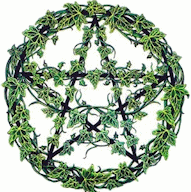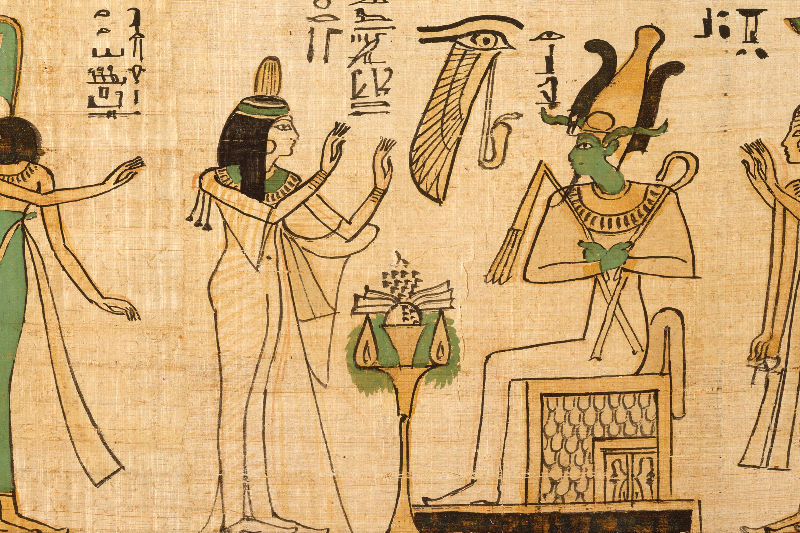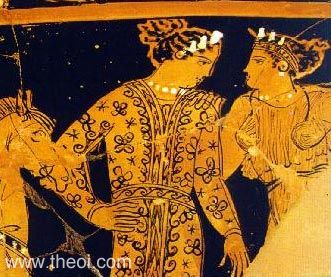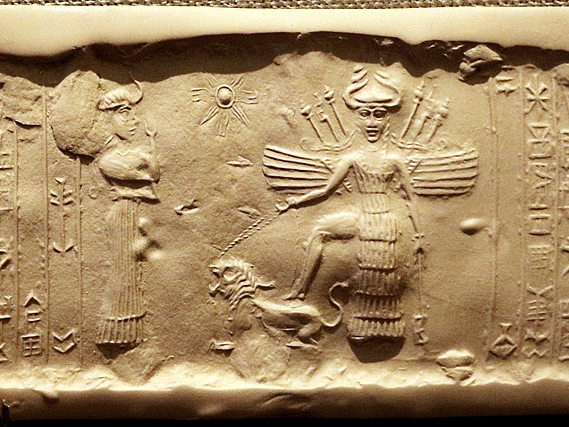Ancient Egypt arose on the banks of the Nile River, in a relatively narrow strip of fertile land in the middle of the desert. One of the original cradles of civilization, ancient Egyptians worshiped gods as natural forces and in the form of animals that they saw frequently. Most of the ancient Egyptian gods and goddesses were incarnated as either animals or animal-headed men and women.
There were thousands of gods in the ancient Egyptian pantheon. The following is a list of some of the most popular gods and goddesses in the pantheon.
- Amun: Amun is one of ancient Egyptian mythology’s most powerful and revered gods. He was the god of the air and the wind and is often depicted as a man with a tall, plumed headdress or ram-headed figure. Amun was closely associated with the pharaohs, who considered themselves his living embodiment on Earth. They built many temples and shrines dedicated to him, including the famous temple complex at Karnak. In addition to his role as a god of the air, Amun is considered a god of fertility and the creation of life.
- Amunet: Amunet was a goddess in ancient Egyptian mythology, and her name means “the hidden one.” She is often depicted as a woman wearing a crown of tall feathers. As a goddess of mystery, Amunet was associated with secrets, hidden knowledge, and the unseen world. She was believed to have the power to protect people from harm and was often invoked in rituals and ceremonies for protection and healing. Amunet was also closely associated with the god Amun and was believed to be his wife or consort. Together, they represented the concept of hidden power and the ability to create and transform the world.
- Anubis: Anubis was a jackal-headed god, the divine embalmer who was closely associated with mummification and the afterlife; he was the custodian of the dead on their journey into the afterlife. Anubis’ black skin was a symbol of rebirth. He also attended the “Weighing of the Heart” ceremony in the afterlife.
- Anuket: Often depicted as a woman wearing a tall feathered headdress, holding a wand, and sometimes with the head of a gazelle. As a goddess of the Nile River, Anuket was associated with water, fertility, and prosperity. She was believed to have the power to bring fertility to the land and was often honored with festivals and ceremonies dedicated to the Nile River and its annual flooding. Anuket was also closely associated with the god Khnum, who was believed to be the creator of the Nile River. Together, they represented the life-giving power of the river and the ability to nourish and sustain life.
- Bastet: Bastet was a feline goddess who was depicted either as a cat or a woman with the head of a cat. Bastet was worshiped for her maternal, protective nature and was often painted surrounded by kittens. But she was also believed to be ferocious when necessary for cats were able to kill snakes – one the most deadly creatures in ancient Egypt.
- Bes: Bes was a small but essential god in ancient Egyptian mythology. He was a god of entertainment, dance, and music and was often depicted as a short, plump, and bearded figure with a lion’s mane and tail. Bes was considered a protector of women and children and was often invoked to ward off evil spirits and danger. He was believed to have the power to chase away demons and other malevolent forces and was often depicted as a fierce warrior armed with a sword and shield. He was often depicted on the walls of temples and homes and was believed to bring good luck and fortune to those who honored him.
- Hapi: Hapi was a god of fertility in ancient Egyptian mythology, associated with the Nile River and its life-giving properties. He was often depicted as a man with large breasts and a prominent belly, symbolizing the abundance and fertility of the land. As the god of the Nile, Hapi was considered the source of all life and prosperity in Egypt.
- Hathor: Hathor was the cow goddess who was associated with dancing and music but she was also known as the Lady of Heaven, Earth, and the Underworld. She was very popular among ancient Egyptians and was seen as wise, gentle, and affectionate to both the living and dead. She protected women during pregnancy and childbirth and was also worshiped as a goddess of fertility. Hathor is most often portrayed as a woman with cow horns.
- Heket: Often depicted as a woman with the head of a frog or sometimes as a fully-formed frog. She was also associated with childbirth and fertility. As a goddess of childbirth, Heket was believed to assist women during labor and ensure the safe delivery of their babies. She was also associated with resurrection and rebirth and was often invoked in funerary rituals to ensure the deceased’s safe passage to the afterlife. Heket was closely associated with the goddess Isis, who was seen as a mother figure and protector of children. Together, they represented the nurturing and protective aspects of the divine feminine.
- Horus: Worshiped as the god of light and sky, Horus was usually depicted as a falcon-headed male wearing a white and red crown. Associated with the sun, sky, and power, Horus became linked with the pharaoh of Egypt as early as the First Dynasty (c. 3150-2890 BCE). Each pharaoh was believed to be the worldly embodiment of Horus.
- Isis: mother of Horus and both wife and sister of Osiris, Isis is portrayed as a woman, sometimes cow’s head or cow’s horns was and was worshiped as a goddess of fertility. She is the mother of nature and magic. She is the patron of enslaved people, sinners, artisans, and the oppressed, but she also listened to the prayers of aristocrats and leaders.
- Khonsu: Khonsu is the god of the moon. He is often depicted as a falcon-headed man wearing a lunar disk and crescent on his head. As a lunar deity, Khonsu was associated with timekeeping and the moon’s cycles. He was believed to regulate the rhythms of nature, including the tides, the menstrual cycle, and the growth of crops. He was also associated with healing and was believed to have the power to cure diseases and injuries.
- Maat: The personification and goddess of truth, morality, justice, order, and harmony. She symbolizes the natural equilibrium of the universe; she was the opposite of chaos and therefore the highest attainment of Egypt. The “Weighing of the Heart” ceremony as depicted in the Book of the Dead took place in the Hall of Maat. She was typically portrayed as a woman with an ostrich feather on her head.
- Min: Min is the god of male fertility and harvest. He is often depicted as a man with an erect phallus, symbolizing his association with fertility and procreation. As a god of fertility, Min is associated with the growth of crops and the reproduction of animals. Min was also associated with the pharaohs of Egypt and was believed to have the power to grant them fertility and strength.
- Nephthys: Often depicted as a woman with falcon wings and a headdress of horns and ostrich feathers, Nephthys is the goddess of death and mourning. She is believed to watch over the deceased and provide comfort to their loved ones. She is also associated with the night and the dark side of life and is often invoked for protection against evil spirits and malevolent forces.
- Osiris: King of the Dead and the Underworld, god of vegetation, new growth, and renewal. Egyptians saw him as triumphant over death; every pharaoh would be Osiris after death. Osiris is associated with the concept of eternal life and was believed to preside over the afterlife. He was often depicted as a mummified pharaoh, with his arms crossed over his chest, holding the crook and flail, symbolizing his power.
- Ptah: Ptah is the creator god and the maker of things. He is often depicted as a mummified man wearing a skullcap and holding a staff and an ankh. As a creator god, Ptah created the world and all living things. According to legend, he spoke the world into existence and was responsible for creating the gods and goddesses who ruled the universe.
- Ra: Falcon-headed God of the Sun, the life-bringer. He was also associated with pyramid building and the resurrection of the pharaohs. Symbolically born every morning with sunrise, Ra symbolically died with every sunset after which he began his journey into the underworld.
- Sekhmet: Sekhmet was the goddess of war who is depicted as the lion-headed goddess. She was the “Powerful One” and destroyed the enemies of Ra but she also helped kings against their opponents. Sekhmet was also associated with medicine and both disease and health.
- Seshat: Associated with writing, record-keeping, and mathematics, she is often depicted wearing a leopard skin, with a headdress of a seven-pointed star and a crescent moon. As a goddess of writing, Seshat is the patroness of scribes and the keeper of the written word. She was often depicted holding a papyrus scroll and a writing palette and was believed to have helped the god Thoth record the events of the universe.
- Seth: Seth or Set was the god of desert and storms who later also became associated with chaos and darkness. He was painted as a man with the head of a dog with a long snout and forked tail.
- Sobek: The ancient crocodile god, his worship continued until the Roman era, and it was mentioned for the first time in the texts of the pyramids. Some people believed that Sobek – the god who emerged from the dark waters – was the creator of the universe and was also responsible for organizing the universe and its march. He was also called the master of the waters and brought fertility.
- Thoth: The god of wisdom, writing, and magic is most often portrayed as an ibis-headed man. He was the scribe of the underworld, recording the verdict on the deceased in the Hall of Maat, maintained the library of the gods, and authored the spells in “The Book of the Dead”.
- Wadjet: Wadjet was worshiped as a cobra and was often included in royal insignia as a symbol of sovereignty over Egypt. She was seen as the protector of the living Horus – the pharaoh. Wadjet was painted as poised and ready to strike at any potential enemy of the pharaoh. She was sometimes also depicted as a woman with two snakeheads.
This page is a brief overview of some of the most popular gods and goddesses of this pantheon. If you are drawn to a particular pantheon, you should do further study of that culture and mythology. Every culture has a different view of how powerful their gods are, whether they can die, and how the gods are to be approached. You should always try to approach a god or goddess in a way similar to the culture which worships that being.





